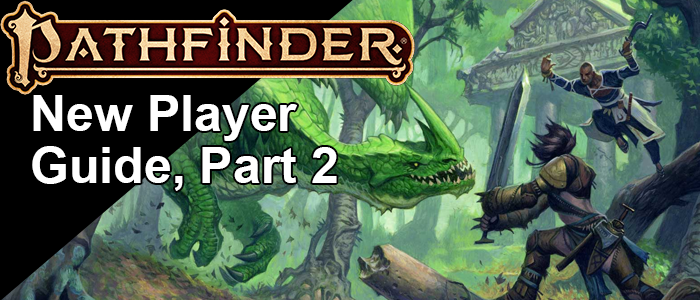I’m so excited for Guns & Gears! Steampunk and clockwork have always excited me, whether it’s presented as cutting edge or lost technology. And as I watched the awesome broadcast last night, it struck me that 2e does make it possible for an entire party of inventors and gunslingers, bringing back memories of campaign books like Ghostwalk… except instead of being a campaign setting we are using as a sourcebook, we are getting a sourcebook we could potentially use as the foundation of our campaign setting! But this is less about creating a continent or even an entire world of cannons and clockwork, and more about addressing the .32 caliber elephant in the room: some GMs hate guns.
There is nothing wrong with not wanting an element in your campaign. Firearms changed the world. They are “older than you think”, but fantasy’s verisimilitude can still be broken regardless of factual anachronism. But many players are going to read these new classes and go: “by golly, these look fun! I want to experience these mechanics at my next game!” And that kind of enthusiasm shouldn’t be quashed with a heavy-handed “banning” of the entire book. But it also doesn’t mean you have to give up agency of your precious world. Like I said in my “Bench-Pressing Your Campaign” article, players and GMs should work together to compromise during session-zero and determine what they want to play. And much like when designing a game mechanic, this can be approached in one of two ways: top-down, or bottom-up.
First, I want to confess that I am a pushover when it comes to integrating what my players want. Do you want guns? Awesome. Guns exist. Why are there still countries that don’t use firearms? We will handle that on a case-by-case basis. Maybe gunpowder is a state secret. Maybe the raw materials are region-locked and my player has a connection that resupplies them during downtime. Heck, maybe they are just plain illegal.
I also want to note that this advice is not strictly about gunslingers. Everything from inventors to clerics can find themselves struggling to integrate into a campaign setting that didn’t expect a player to go down that particular route. The best general advice I can give is to remember that your setting exists to facilitate a game for four-to-six players, not a world for millions that will be scrutinized down to the last detail. PCs are the exception. They can do things most characters in a setting cannot. And the painful truth for many GMs is most players will be more engaged with their characters than in your setting. And positive engagement in what interests a player is critical to the success of a campaign! There is no strict right-or-wrong way to approach this so long as everyone is happy.
Top-Down Compromise
“Top-Down” means to look at the flavor and story first when deciding how to adapt certain content. This approach is best used when a player wants to enjoy the traditional fantasy of an element that may not perfectly mesh with your existing campaign setting. The most common approach is to say that firearm technology is region-locked, such as Alkenstar. But what if the campaign is such that all the characters are from the same region? Well, maybe the character found a cache of inventions from a ship-wreck and is now the only person in the country with their own construct friend. Or perhaps you go full Planescape and just admit there are other worlds and settings connected to this one that could export technology, magic, or even an entire character into your setting. In some cases, this does mean sitting down with the player and examining the reason why their character is different. And in many cases that can mean intentionally shelving the question by hiding the answer from the players until it’s revealed who was really behind the otherwise problematic element. Just make sure to explain to your players in advance what agency you are taking with your players to make sure they understand what themes to expect to arise during gameplay, or else they could feel like nothing they did matter since it was all a part of some outsiders master plan. I find one way to do this without spoiling your campaign is to simply get into a long conversation with the player about game theory and bring it up sandwiched and hidden with other ideas to gauge their enthusiasm. But it’s often best to just be forthright and discuss things openly before the first session to make sure everyone is on the same page!
Bottom-Up Compromise
“Bottom-Up” means to look at the mechanics of something first and potentially tweak things to match the setting. An inventor’s construct could easily be flavored as a golem or even mechanical outsider. The Guns & Gears playtest allows the gunslinger to work with a crossbow. Heck, the chassis of a gunslinger could very well be used to make an Iaijutsu-style samurai who wants to strike for tons of damage at the start of a fight but is more martial than a rogue. You might cringe when a player brings up a class you don’t think will fit your setting, but hold back your expression and engage your player until you understand what it is about the class they enjoy. There’s a good chance that what you consider a problematic element isn’t something that interests the player in the slightest; They very well might just enjoy the mechanics of a game element, which should resolve most of your issues incorporating it into your campaign!






